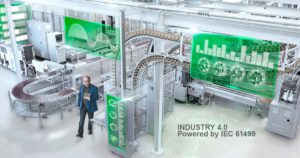Countries around the globe are taking definitive steps to reduce greenhouse gas (GHG) emissions and, consequently, their carbon footprint. At least 40 countries have mandatory emissions reporting programs in place in order to gauge compliance with international agreements such as the Kyoto Protocol, the Paris Agreement and most recently, the Kigali HFC Agreement signed by 170 countries in October 2016.
Now individual cities are taking it upon themselves to encourage reductions in GHG as well. In 2016 for example, the Australian capital city of Canberra, and the surrounding Australian Capital Territory (ACT) district, established the lofty goal to be 100% powered by renewable energy by the year 2020. Similarly, early this year New York City Mayor Bill de Blasio announced an expansion of the NYC Carbon Challenge program, adding 22 new commercial owners and tenants who committed to reduce GHG emissions from their buildings by 30 percent or more in 10 years.
To help cities meet such goals, companies would do well to look at their data centers and apply some of the latest economizer technologies. The investment bank Goldman Sachs is doing just that. In 2013 the company accepted the NYC Carbon Challenge, pledging to cut its GHG emissions by 40% from 2006 levels.
The company beat its goal in 2015, achieving a 42% reduction in carbon emissions per square meter. It did so in part by consolidating older offices into a single LEED Gold-certified facility, complete with LED lighting and occupancy sensors. But the company also installed variable frequency drives (VFDs) and electronically commutated (EC) motors on the chillers and controllers that enable its cooling systems to operate based on the actual occupancy of the building, not simply a predefined temperature threshold.
That’s an important distinction that applies equally well to data centers as to commercial buildings. A building that’s filled with people will require more cooling than an empty one; as occupancy levels change, the variable speed technology can more accurately ensure cooling capacity meets actual requirements at any given time.
New Ecoflair Indirect Air economizers dissipate the majority of the thermal load with an air-to-air heat exchanger. Compressors need to “trim” the cooling capacity and therefore VFDs are crucial in providing the actual capacity needed by the unit.Similarly, a data center outfitted with air economizers will use outside air to cool the data center airflow as much as possible, usually without mixing airflows and therefore protecting the data center from outdoor air contaminations. Newer evaporative cooling systems can take advantage of VFDs to more accurately match the mechanical trim cooling to the heat that’s not dissipated by the economizer units, as explained in this previous post.
Variable speed solutions aren’t the only way to more dynamically control data center temperature (and thus save energy). Chillers, for example, can now perform set point compensation, to continuously change the supply water temperature based upon actual conditions in the data center. Likewise, variable speed fans in cooling systems can be controlled based on pressure differentials associated with air containment systems and match the airflow delivered to the airflow required by the IT gear, regardless if they are idle or operating at maximum compute.
Example of the air containment offered by Schneider ElectricAll of these methods add up to dramatic energy savings for data center cooling, which typically accounts for the lion’s share of overall data center energy consumption apart from the servers. As we all look to reduce our carbon footprint and GHG emissions, data center cooling is a prime target for significant savings.
Not all cooling systems will be able to deliver these savings, however. To learn more about systems that can, visit our EcoflairTM Air Economizer site where you will find free white papers and resources.



